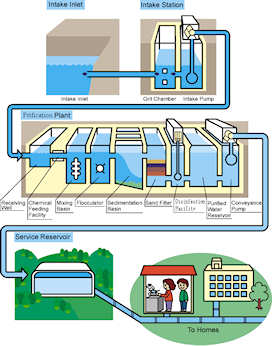 University of Illinois geneticist Michael Plewa said that disinfection byproducts (DBPs) in water are the unintended consequence of water purification.
University of Illinois geneticist Michael Plewa said that disinfection byproducts (DBPs) in water are the unintended consequence of water purification.
"The process of disinfecting water with chlorine and chloramines and other types of disinfectants generates a class of compounds in the water that are called disinfection byproducts. The disinfectant reacts with the organic material in the water and generates hundreds of different compounds. Some of these are toxic, some can cause birth defects, some are genotoxic, which damage DNA, and some we know are also carcinogenic."
The 10-year study began with a U.S. Environmental Protection Agency grant to develop mammalian cell lines that would be used specifically to analyze the ability of these compounds to kill cells, or cytotoxicity, and the ability of these emerging disinfection byproducts to cause genomic DNA damage.
"Our lab has assembled the largest toxicological database on these emerging new DBPs. And from them we've made two fundamental discoveries that hopefully will aid the U.S. EPA in their regulatory decisions. The two discoveries are somewhat surprising," Plewa said.
The first discovery involves iodine-containing DBPs. "You get iodine primarily from sea water or underground aquifers that perhaps were associated with an ancient sea bed at one time. If there is high bromine and iodine in that water, when you disinfect these waters, you can generate the chemical conditions necessary to produce DBPs that have iodine atoms attached. And these are much more toxic and genotoxic than the regulated DBPs that currently EPA uses," he said.
Plewa said that the second discovery concerns nitrogen-containing DBPs. "Disinfectant byproducts that have a nitrogen atom incorporated into the structure are far more toxic and genotoxic, and some even carcinogenic, than those DBPs that don't have nitrogen. And there are no nitrogen-containing DBPs that are currently regulated."